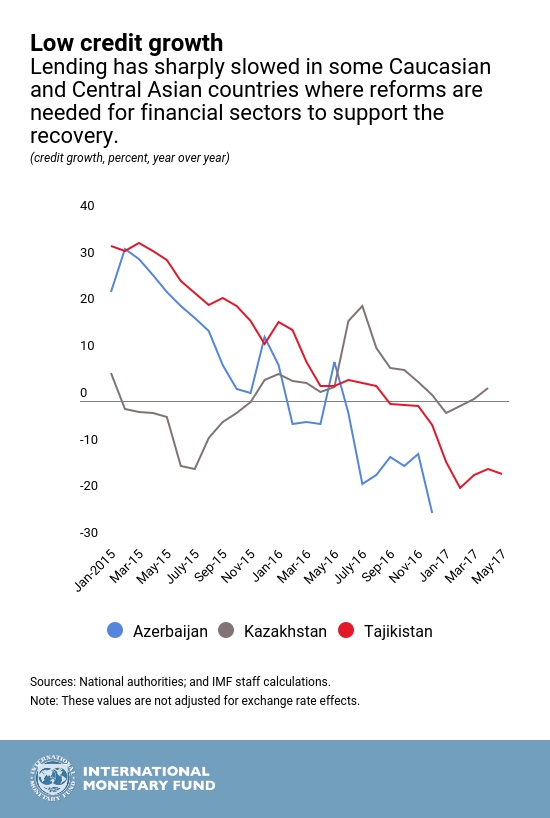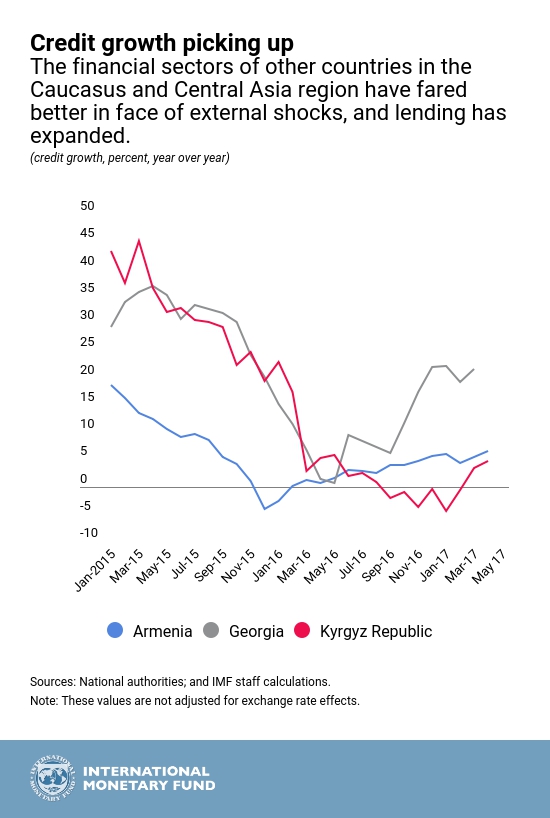
Oil field on the shores of the Caspian Sea in Azerbaijan. Domestic reforms and better economic conditions help recovery in the Caucasus and Central Asia (photo: Grigory Dukor/REUTERS/Newscom)
The Caucasus and Central Asia: Time for Decisive Action
November 1, 2017
The economies in the Caucasus and Central Asia (CCA) are recovering supported by improving economic conditions in their main trading partners, higher commodity prices, and reforms taking hold, observes the newly launched 2017 CCA Regional Economic Outlook. Countries in the region should use the opportunity created by the global uptick in growth and various integration initiatives to diversify their economies and reinforce growth over the longer term.
“The CCA region faces an opportunity created by improving global economic climate and several regional initiatives promoting integration. To capitalize on this opportunity, countries should work on reforms that attract foreign investment, create jobs, and promote diversification. The region would benefit from stronger institutional frameworks too,” said Juha Kähkönen, Deputy Director of the Middle East and Central Asia Department at the IMF.

Growth is recovering, but remains below recent trends
GDP growth in the CCA region will pick up to 3.6 percent this year, from 2.5 percent in 2016, and gradually accelerate to 4.7 percent in 2022. The improvement is mostly due to a stronger economic performance of the region’s main economic partners, such as China and Russia, and the firming of key commodity prices, including oil, copper, cotton, and gold.

But over the medium term, growth is expected to score much lower than the 8.1 percent average observed between 2000 and 2014. That is primarily because economic conditions abroad and prices of commodities are projected to remain subdued relative to this historical period. Additional structural reforms are needed throughout the CCA region, and in some countries the capacity of the financial sectors to support the recovery is at risk.
A better integration of the region into the global economy, including through China’s One Belt and One Road Initiative and Uzbekistan’s reform program, would help the CCA countries address infrastructure needs, create stronger economic and financial ties, and support the much-needed diversification away from commodities and remittances.
Need to strengthen public finances
Although governments in the region have taken steps to streamline spending and increase revenue to replenish fiscal buffers, they have not managed to make up for the gap created by appropriate earlier steps to shore up economic activity when commodity prices and remittances declined. While public debt has stabilized, it remains high in some countries and more is needed to reduce it from current levels.
To this end, governments should invest public funds more efficiently, contain current expenditures—including public sector wage bills—and find new sources of revenue, for example, by reducing tax exemptions and improving tax collections. However, critical social expenditures should be protected.
Financial sector repair
Exchange rate depreciations and greater exchange rate flexibility have helped reduce the budget and trade deficits in several countries, but at the same time have exposed deep-rooted vulnerabilities in some banking systems. In those countries, credit growth has sharply slowed and reforms are needed for financial sectors to be able to support the recovery. With the exchange rates no longer fixed, countries need to strengthen their monetary policy frameworks by setting out clear monetary policy objectives, communicating them to the public, and boosting central bank independence. They also need to promptly improve banking supervision and regulation, cope with problem banks and bad loans, and eliminate business practices that result in risky lending.


Policies to boost growth
In the pursuit of stronger and more inclusive growth, and less dependence on commodity exports and remittances, countries in the region should also improve the business environment, diversify their economies, and deepen trade integration, the report suggests.
Many countries have outlined ambitious structural reform strategies and started implementing them. However, more remains to be done. Given the strengthening global recovery, now is the time to make a decisive push for such reforms.


